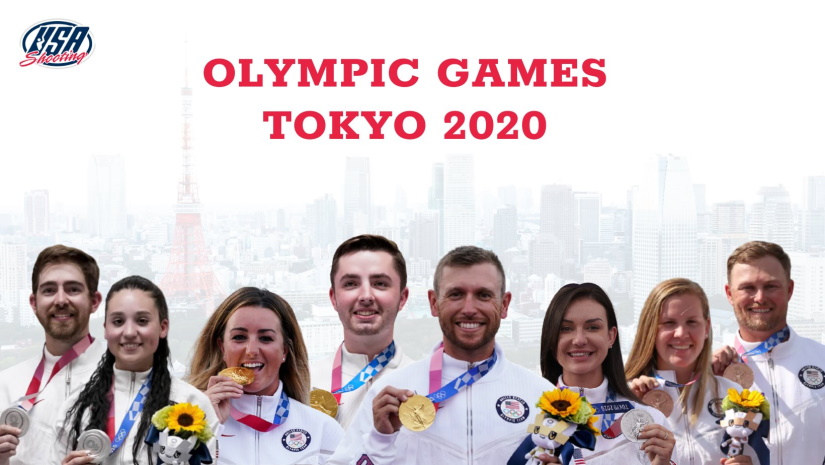November 29, 2021 | Erin Bluvas, bluvase@sc.edu
Cathy Arnot has been a faculty member at the Arnold School for 15 years, but she’s worked with the USA Shooting Team for even longer. With no personal background in the sport, Arnot got her unlikely start supporting shooting athletes during her Doctor of Physical Therapy (DPT) program in 2003. Nearly 20 years later, the physical therapist/clinical associate professor is still doing what she loves best: preparing the Arnold School’s DPT students for careers as physical therapists and traveling the world to assist dedicated athletes at the top of their game.
Growing up in Virginia, Arnot knew she wanted to be a physical therapist. After seeing her sister go through multiple back surgeries due to an injury, Arnot’s efforts to help her sibling be more comfortable and regain mobility sparked her interest in the field.
She studied exercise science at Virginia Tech and immediately applied to a Master of Physical Therapy program at Baylor University. Arnot spent the next five years as an active-duty service member and then another three in the reserves, ultimately gaining a decade of clinical experience after earning her master’s degree.
By 2000, Arnot had decided to pursue a DPT at the University of St. Augustine. As part of her program, she completed a manual therapy fellowship at SportsMedicine of Atlanta – a decision that would change the trajectory of her career and add dozens of stamps to her passport.
“My mentor during the fellowship was a shotgun shooter who treated the USA Shooting Team, and he asked me to help,” Arnot says. “I’ve been with the team ever since, and it has been a dream come true.”
“I adore my job with these students, and I adore packing up to go to Portugal, Japan, Italy, Russia, the United Arab Emirates, and many other places I never would have had a chance to visit.
-Cathy Arnot, clinical associate professor of exercise science
Over the past 18 years, Arnot has supported the shooting team through world cups, CAT games, national matches, Pan American competitions, and even two Olympics Games – London in 2012 and Tokyo just a few months ago. Prior to the pandemic, the shooting team competed in approximately 10 events per year, including 4-5 overseas trips. Though they were able to participate in the Tokyo Games, things definitely looked different.
“This year’s Olympics were very different from previous competitions,” says Arnot, who served as the medical director for the team, overseeing testing protocols and medical care both in Japan and back in the United States. “It was very organized with strict protocols related to COVID-19, which meant we were confined to the village, the hotel or the range, and there were no spectators. We also faced the challenges of an earthquake and a typhoon. Still, it was a wonderful experience, and we came away with more medals than any other USA team since World War II. Plus, it was great to be back together with the team.”
The team, which includes 15 athletes, six coaches and two physical therapists (including Arnot), is a close-kit group – almost like a family. Unbeholden to some of the physical limitations of other Olympic sports (e.g., ice skating, gymnastics), shooting athletes can range from young adult into their 50s, participating for up to 20-30 years. In fact, some of the athletes have been on the team since 2003 when Arnot first started.
Today Arnot is one of the veteran members of the shooting team. In addition to serving as the medical director, she handles the physical therapy needs of the pistol shooters (e.g., wrist, elbow, neck pain) and the rifle athletes, who sustain contorted positions for two to three hours at a time and thus experience the most injuries. The other physical therapist supports the shotgun shooters with issues such as neck and shoulder pain.
In addition to her role as the National Team Physical Therapist for Rifle and Pistol, Arnot is on the medical committee for the International Sport Shooting Federation – a group that meets annually in Munich. To support the Paralympic Shooting Team, Arnot serves as both a physical therapist and a classifier.
Classifiers work with athletes who don’t have international classifications to conduct a full body evaluation. This assessment helps determine the level of support the individual may need to participate in a particular event. For example, someone with an amputation may require different support than someone who has multiple sclerosis.
At the end of the day – or trip, rather – Arnot brings her experiences back into the classroom where she shares her adventures and inspires future physical therapists enrolled in the Department of Exercise Science’s DPT program. Several students have developed an interest in becoming classifiers themselves. These three individuals are working with Arnot on a research study to review the classification system used by the international Paralympic community, which is relying on Arnot on her team to provide feedback and recommendations.
The professional world she has created for herself is a win on all fronts. Arnot’s work with Olympic and Paralympic athletes fulfills her service and clinical requirements along with her passion for travel. Her ability to bring these lessons and opportunities back to her students enriches their educational experience.
“I adore my job with these students, and I adore packing up to go to Portugal, Japan, Italy, Russia, the United Arab Emirates, and many other places I never would have had a chance to visit,” Arnot says. “I have gotten to do some really exciting and fulfilling things, and I am so thankful.”
Related:
Arnot works with shooters to relieve variety of overuse injuries
